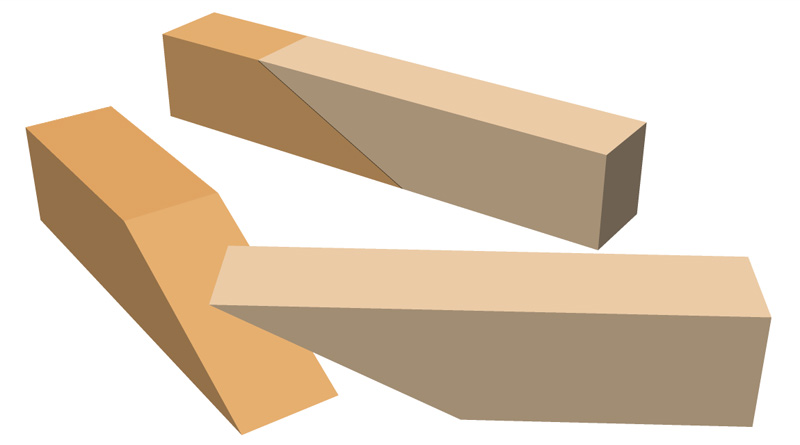|
||
 |
||

(C)2001 Japanese Architecture and Art Net Users System. No reproduction or republication without written permission.
掲載のテキスト・写真・イラストなど、全てのコンテンツの無断複製・転載を禁じます。
|
||||||
| sogitsugi 殺継 | ||||||
| KEY WORD : architecture / joints | ||||||
| Also called suberihatsugi 滑刃継; hauchitsugi 羽打継. A scarf joint. A simple butt joint made stronger by splicing the ends of a timber obliquely and joining the matching surfaces from the top with a type of nail called awasekugi 合釘. This joint is generally used only for light weight timber. If the scarf planes are too long, the joint will be weak. Hence, the oblique cut rarely exceeded a 30 degree angle. The joint was commonly used to extend the length of rafters *taruki 垂木. One or two heavy nails were often added to strengthen the joint. Without proper reinforcement the scarf joint and the lap joint *koshikaketsugi 腰掛継, were relatively ineffective except to adjust the alignment of members. Consequently, both the scarf and lap joints were combined with other methods of joinery to produce complex joints which could withstand tension and twist without the use of extraneous material to strengthen them. | ||||||

|
||||||
| REFERENCES: | ||||||
| *daimochitsugi 台持継, *okkake daisentsugi 追掛大栓継, *kanawatsugi 金輪継, *isukatsugi いすか継 | ||||||
| EXTERNAL LINKS: | ||||||
| NOTES: | ||||||
(C)2001 Japanese Architecture and Art Net Users System. No reproduction or republication without written permission. 掲載のテキスト・写真・イラストなど、全てのコンテンツの無断複製・転載を禁じます。 |
||||||